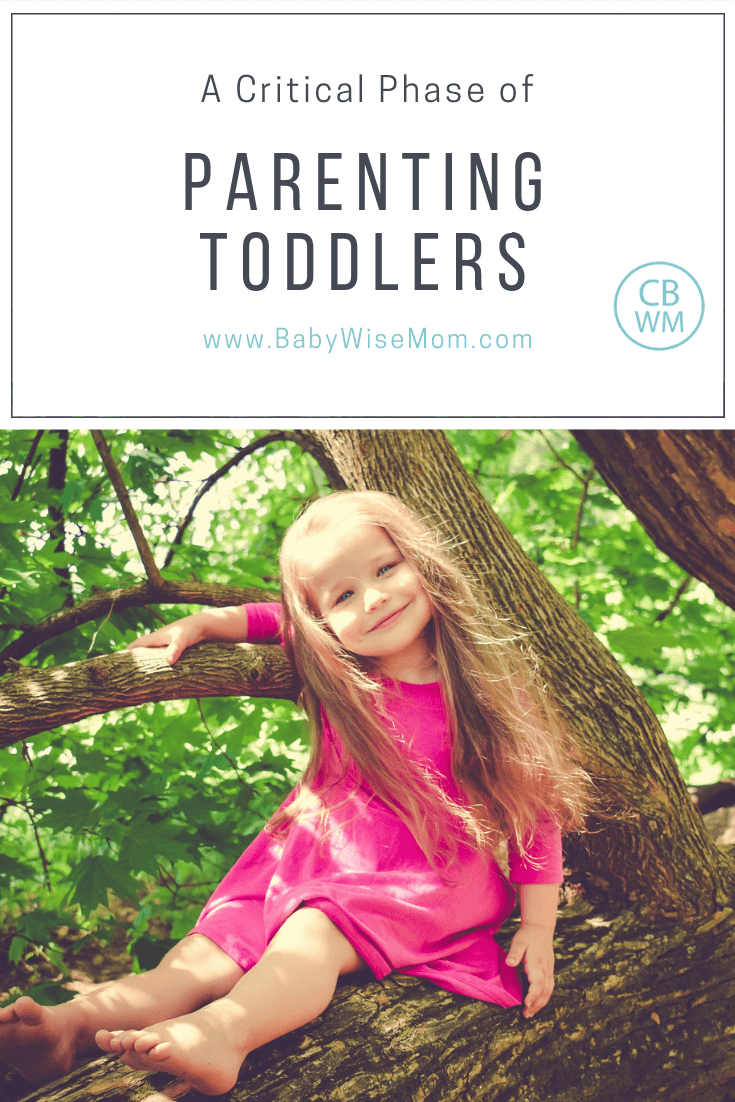Parenting Toddlers: a Critical Phase of Learning. Reasons why you should direct toddler curiosity rather than let the toddler have free reign.
“Curiosity plus mobility puts a child in the center of a critical phase of learning, where knowledge and habits produce life-long consequences” (On Becoming Toddlerwise, page 22).
This quote is referring to the moment when your toddler learns to walk. This usually occurs at the same point when your child’s curiosity is peaked. Your child wants to know everything about everything, and she also has the ability to reach many of those things she has never had the opportunity to reach before. It has never been an option. Now it is, and she wants to know about it. Your toddler has limitless energy, and you wish she could transfer some to you so you two could be on a more even playing field.
I love the show Curious George. George embodies this curious little toddler well. As I watch that show, I see my children. The curiosity of a toddler can be frustrating at moments, but it also enlivens me. I again see the world through new eyes. I notice things I haven’t looked at in years. A toddler is curious about everything. Absolutely everything. Nothing goes unnoticed. Everything is interesting. This makes sense; your child is seeing many of these things for the first time. The items she has seen over and over are now available to her whenever she wants them because she can get herself there.
Toddler Curiosity
What do you do with that curiosity? This is a critical difference among many parenting philosophies. There is a popular philosophy out there right now that says to let
children explore freely. Put no limit on the child and see how she learns and what she learns. This is a romantic notion and I can see why it is popular. In a world where we are snatching away childhood from our children by enrolling them in every dance, sport, music, and art class available, letting them freely explore is a way to alleviate our conscience from turning them into little stressed-out adults too soon.
However, this philosophy has many inherent problems.
One is that while a child desires to be good and do good at her core, she really doesn’t have any idea what “good” is. She needs to be taught and guided. Some things that are “good” are global. Physically harming another person is globally unkind.
Other things that are “good” are cultural and therefore not necessarily inherent for the child. This is true in the case of many social manners. Most cultures vary on something like personal space. Some stand very close to each other child talking and show much physical affection to each other. Others stand quite far away and never touch each other in public. And yet other things that are “good” vary from family to family. Language that is perfectly acceptable to your neighbors might be quite offensive to you.
Children need direction. As a parent, you can take that curiosity and use it for your child’s benefit to teach her the direction to go in. Toddlerwise says not to deny or suppress your toddler’s curiosity, but rather manage it (page 25).
Another inherent problem with the desire to let a child explore in order to learn is that curiosity only gets the child so far. Once the novelty of the item wears off, so does the curiosity and the child’s learning. There are so many things that are of novelty to your child that it is easy for her to find something else to capture her interest.
A third inherent problem I see is that you are basically encouraging your child to “reinvent the wheel” so to speak. These explorations have been done in the past and given us much great knowledge to build on. Why let our child try to teach herself these basics we could easily teach her? We can guide her learning process and teach her these foundational items, then add to them and expand her wealth of knowledge. She can move on to bigger and better things than the wheel.
Parenting Toddlers
The book Toddlerwise points out a phrase that is often said by parents, and I have also heard it many, many times: “…I don’t want to disappoint my child or stifle his exploration” and I would add “stifle his creativity.” As the book points out, you can’t parent your child without disappointing and curbing exploration. It is part of being a parent and part of being a child. Sometimes children need to stop. You can encourage exploration and creativity in environments that create real, productive learning. This also doesn’t mean you never ever let your child explore. You just allow it under the right conditions at the right time.
This is a critical phase of learning for your child because so many habits are happening now. Your toddler is very malleable right now. If you think it is a challenge to teach the 15 month old to not touch something, wait for the three year old. Many parents think this will be easier once the child is older. It is, if you taught her young. If you decided to wait until she was older, when it would be “easier,” you will find it to be much more difficult.
I don’t call call the 15 month old “tantrum” a mini-fit for no reason. 15 month olds don’t really have tantrums. They have a mini-fit. I call it a mini fit because it is not a tantrum when you compare it to what the older child can do. Please believe me when I tell you now is the time to start. Now is the time your toddler is learning what is okay and what isn’t. Teaching her from the start is easier than re-training her down the road.
The toddler who has been living the principles of Babywise and Babywise II will find the principles of Toddlerwise to flow naturally. I encourage you to read Toddlerwise once your child turns one and continue to practice the principles. This book is one of my favorite parenting resources and it is full of great tips. Again, it is more work in the younger toddler years to correct and discipline, but makes life much easier in the older toddler years and with older kids. It is all well-worth your effort.
 On Becoming Toddler WiseShop on Amazon
On Becoming Toddler WiseShop on Amazon



